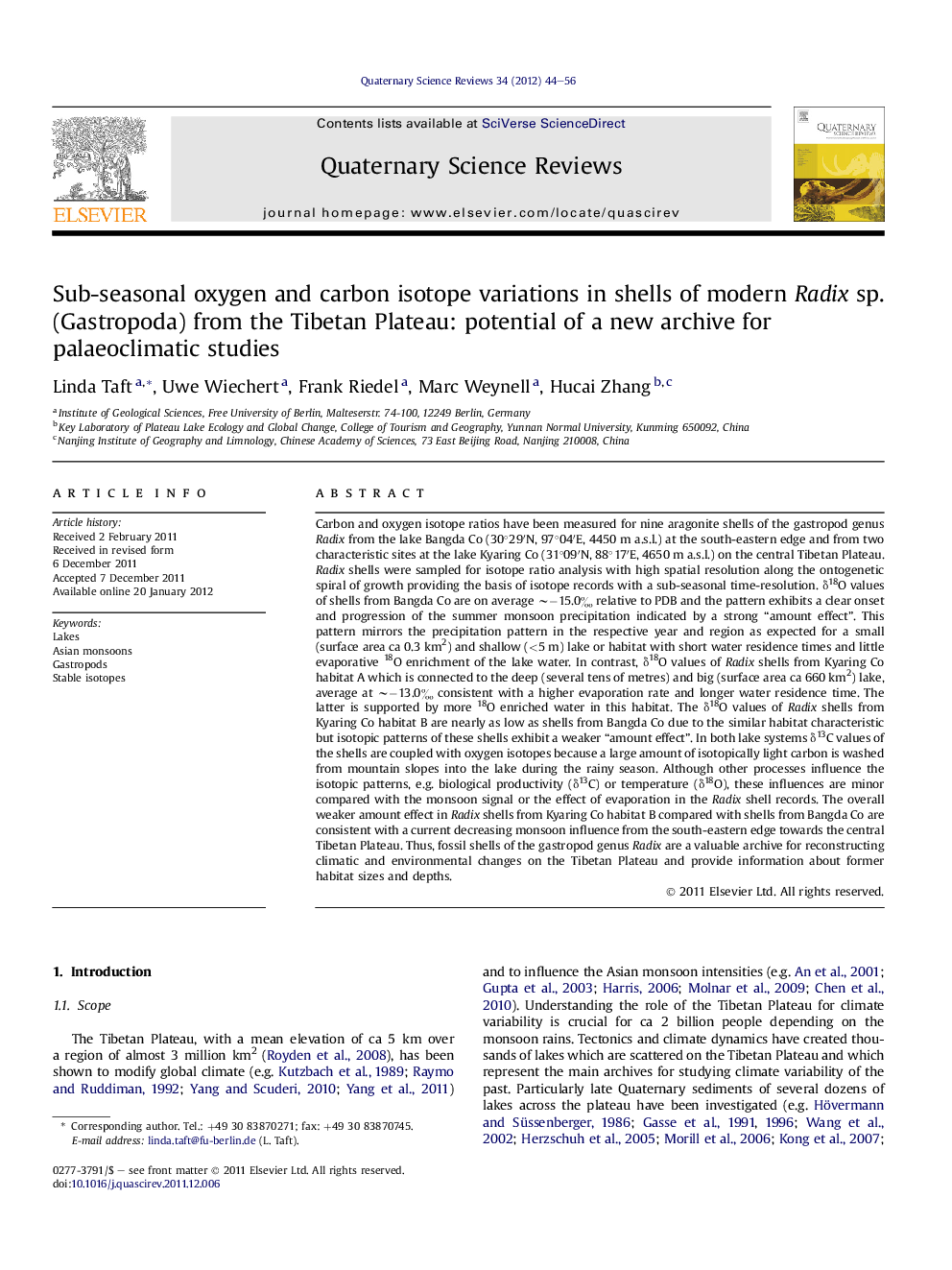| کد مقاله | کد نشریه | سال انتشار | مقاله انگلیسی | نسخه تمام متن |
|---|---|---|---|---|
| 4735789 | 1640900 | 2012 | 13 صفحه PDF | دانلود رایگان |

Carbon and oxygen isotope ratios have been measured for nine aragonite shells of the gastropod genus Radix from the lake Bangda Co (30°29′N, 97°04′E, 4450 m a.s.l.) at the south-eastern edge and from two characteristic sites at the lake Kyaring Co (31°09′N, 88°17′E, 4650 m a.s.l.) on the central Tibetan Plateau. Radix shells were sampled for isotope ratio analysis with high spatial resolution along the ontogenetic spiral of growth providing the basis of isotope records with a sub-seasonal time-resolution. δ18O values of shells from Bangda Co are on average ∼−15.0‰ relative to PDB and the pattern exhibits a clear onset and progression of the summer monsoon precipitation indicated by a strong “amount effect”. This pattern mirrors the precipitation pattern in the respective year and region as expected for a small (surface area ca 0.3 km2) and shallow (<5 m) lake or habitat with short water residence times and little evaporative 18O enrichment of the lake water. In contrast, δ18O values of Radix shells from Kyaring Co habitat A which is connected to the deep (several tens of metres) and big (surface area ca 660 km2) lake, average at ∼−13.0‰ consistent with a higher evaporation rate and longer water residence time. The latter is supported by more 18O enriched water in this habitat. The δ18O values of Radix shells from Kyaring Co habitat B are nearly as low as shells from Bangda Co due to the similar habitat characteristic but isotopic patterns of these shells exhibit a weaker “amount effect”. In both lake systems δ13C values of the shells are coupled with oxygen isotopes because a large amount of isotopically light carbon is washed from mountain slopes into the lake during the rainy season. Although other processes influence the isotopic patterns, e.g. biological productivity (δ13C) or temperature (δ18O), these influences are minor compared with the monsoon signal or the effect of evaporation in the Radix shell records. The overall weaker amount effect in Radix shells from Kyaring Co habitat B compared with shells from Bangda Co are consistent with a current decreasing monsoon influence from the south-eastern edge towards the central Tibetan Plateau. Thus, fossil shells of the gastropod genus Radix are a valuable archive for reconstructing climatic and environmental changes on the Tibetan Plateau and provide information about former habitat sizes and depths.
► New climate archive in sub-seasonal resolution for the Tibetan Plateau.
► δ18O and δ13C ratios in shells of the freshwater gastropod Radix sp.
► Isotope patterns mirror summer monsoon precipitation.
► Promising new tool for reconstructing palaeoclimate and lake environments.
Journal: Quaternary Science Reviews - Volume 34, 21 February 2012, Pages 44–56